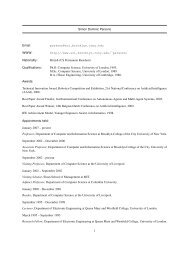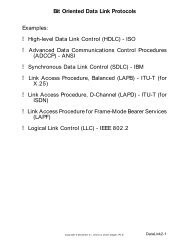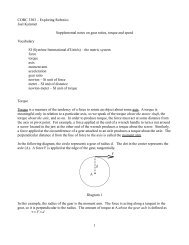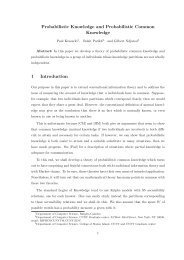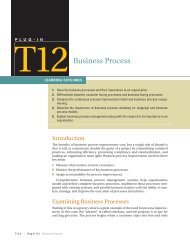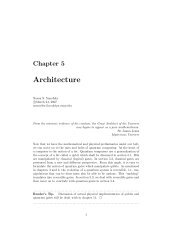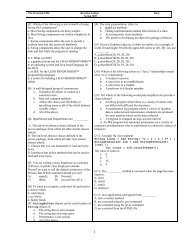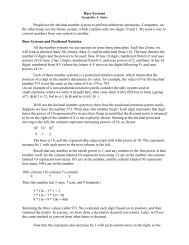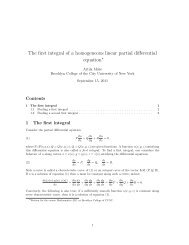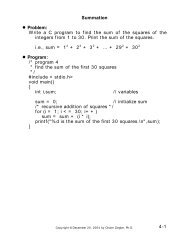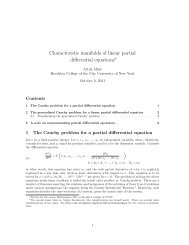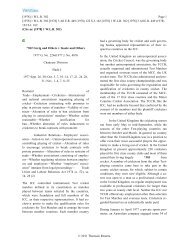CORC 3303 Review
CORC 3303 Review
CORC 3303 Review
Create successful ePaper yourself
Turn your PDF publications into a flip-book with our unique Google optimized e-Paper software.
Notes about the final exam:<br />
1) You can bring one sheet of notes to the final exam. It has to be a letter-sized (8.5” x 11”) paper, two sided is fine,<br />
any size of font you can read.<br />
2) NO electronic devices, including your phone, can be used during the exam.<br />
Areas of interest<br />
<strong>CORC</strong> <strong>3303</strong> <strong>Review</strong><br />
1. Fundamentals of Robotics and their relationship to case studies<br />
2. Familiarity with the Lego RCX kit (parts) and the RoboLab software<br />
3. Introduction to elementary programming with a GUI environment<br />
1. FUNDAMENTALS<br />
A. Introduction to Robots<br />
What is a robot? (autonomous embodied agent)<br />
History, where does the term come from? The Three Laws of Robotics<br />
Five components of a robot (Actuators, perception (sensors), control, power, communications)<br />
Effectors, types of effectors: manipulator (gripper, arm) or mobile (leg, wheel), actuators<br />
Sensor modalities, environment (accessible, deterministic, dynamic, etc)<br />
BigDog<br />
B. Construction<br />
Types of actuators (electric, hydraulic, pneumatic)<br />
Degree of freedom (x, y, z – positions, roll, pitch, yaw – orientations), controllable vs uncontrollable. Holonomic, nonholonomic,<br />
redundant<br />
Gears (driver, idler, follower): transferring motion, changing speed (in rpm), torque and direction, gearing ratio (gearing<br />
up vs. gearing down). Given gear sizes and wheel perimeters, calculating rotational speeds and distances.<br />
DARPA Grand Challenges<br />
C. Locomotion<br />
Modes of locomotion, legged vs wheeled, dynamic stability vs static stability, gaits, differential steering.<br />
Definition of algorithm: a step-by-step sequence of instructions for carrying out some task.<br />
The algorithm to solve a problem is not unique (think the different ways of solving the same problem in your projects)<br />
Good algorithms vs. the bad (in speed, memory, complexity, whether allowing parallelism) -> algorithm analysis<br />
Syntax error vs. logic error, debugging
Multi-tasking: a job of the operating system, managing the CPU usage among processes, context switching.<br />
Considerations in designing a stairway detecting and climbing robot<br />
D. Sensing<br />
Sensors: proprioception / exteroception, types of sensors, issues with sensors (signals, not symbols), different levels of<br />
processing, simple sensors (switch, light) vs complex sensors, active vs passive, sensor fusion, calibration<br />
How roomba works, RCX decision making, light sensor fork and touch sensor fork.<br />
E. Control<br />
Feedback control, types of feedback control (P, PD, PID controls).<br />
Control architectures: principles for organizing a control system, there are: deliberative control (planner-based<br />
architecture, look-ahead with internal representation), reactive control (fast, little internal representation), hybrid<br />
control (combining the two, working in parallel), and behavior-based control (think the way you act)<br />
F. Robot Teams<br />
Benefits of robot teams, their challenges, coordination strategies, communication, control architectures for robot teams.<br />
RoboCup: purposes and goal, leagues of competition, Aibo, NAO.<br />
2. PARTS OF THE LEGO RCX SYSTEM AND BASICS OF THE ROBOLAB ENVIRONMENT<br />
Recognizing parts and explaining their functions, input/output ports, sensors, motors (polarity), lamps, communication,<br />
gears, building blocks.<br />
Recognizing common RoboLab icons and how they are modified.<br />
3. PROGRAMMING FOR THE RCX SYSTEM<br />
Writing simple programs using icons shown above.



